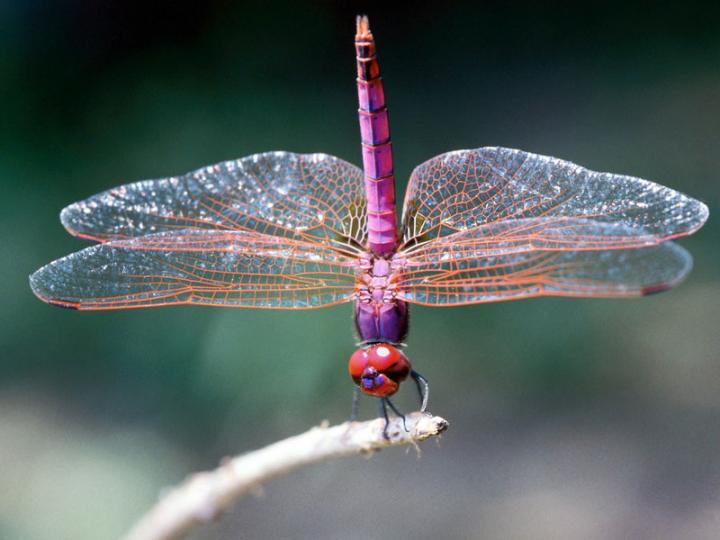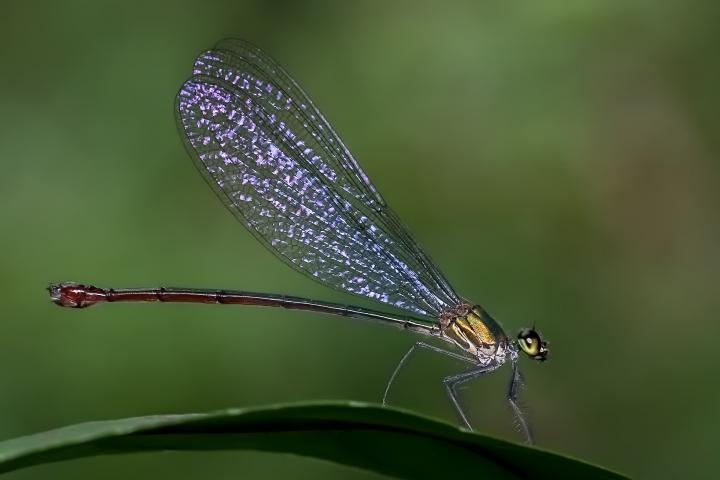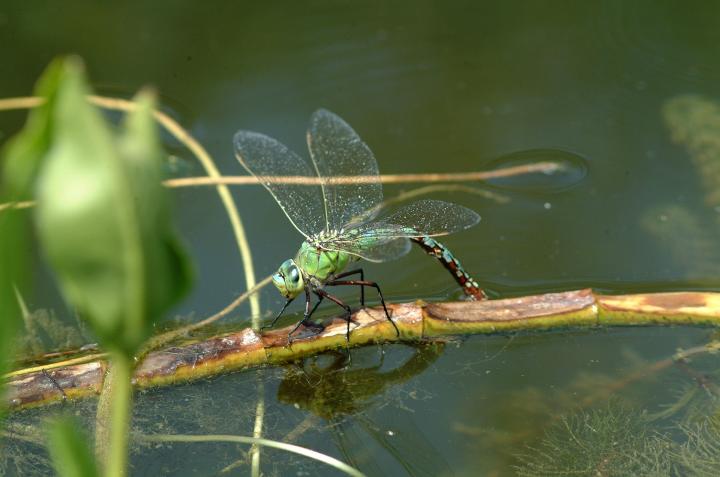






The dragonfly and its smaller cousin, the damselfly, belong to an ancient order of insects known as Odonata and have carried symbolic meaning for centuries. Most people love to have dragonflies in their gardens, if only because dragonflies love to eat mosquitoes.
Who hasn’t marveled at the aerial abilities of dragonflies as they glide effortlessly over sparkling streams, pristine ponds, and lakes, plucking insects from the air with deadly precision?
Surprisingly, these brilliantly colored masters of the air are classified as aquatic insects because they spend most of their lives as larvae underwater among plants or in silt. They may spend five years or more in the larval stage, molting several times before emerging as adults—and then living only a few weeks to a few months.
With keen eyesight and expert airmanship, dragonflies and damselflies easily outmaneuver and catch insect prey. Their four gossamer wings move independently of one another, giving them the ability to fly forward, backward, and sideways, or to just hover in place. Bead-like eyes provide 360–degree stereovision, allowing them the ability to spot insects in any direction without turning or moving their heads. (In fact, dragonflies have the biggest eyes in the insect world.)
Dragonflies and damselflies, though similar in their life cycle and appearance, fly differently. You can distinguish them by noticing that dragonflies fly directly and with purpose, while the damselfy’s flight is more fluttery. The damselfly also has a slightly longer abdomen.

A damselfly has the same captivating appearance as a dragonfly, but it is a bit smaller and its eyes are farther apart.
What do dragonflies eat? The dragonflies’ and damselflies’ fondness for mosquitoes puts them in the category of beneficial insects, but they eat many other annoying bugs. Their diet includes midges, moths, flies, and other flying insects. Unfortunately, they also sometimes eat butterflies. This means that planting flowers that attract butterflies might keep your yard full of both species.
Dragonflies aren’t just beneficial as mosquito-eaters. Their role as barometers of wetland health is also very important. In order to survive, odonate larvae need clean, well-oxygenated water. Drainage of wetlands, pollution from farming and industry, and the development of new roads and houses have increasingly reduced dragonfly habitat. Conservation of existing wetlands is key to odonate survival, as is providing new habitats for them to colonize.
Fossil records show that dragonflies were around for 100 million years before the dinosaurs. These prehistoric predators had wingspans of over three feet and are the largest insects known. Imagine if they were that big now—a dainty dragonfly landing on your finger would not seem quite so charming!

Dragonflies are born and spend most of their lives in aquatic habitats, so you can attract them by building a pond in your yard.
You can read more about the marvels of dragonflies in this blog about appreciating the beauty of the insects with rainbows for wings。
Copyright © www.100flowers.win Botanic Garden All Rights Reserved